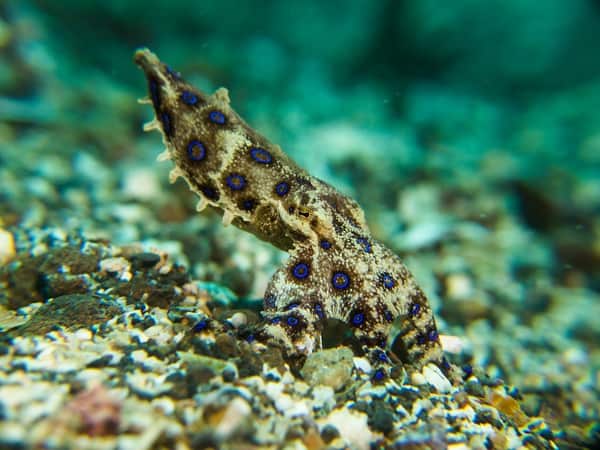We have had plenty of blue ring octopus in Lembeh recently with them being an almost daily occurrence. Blue ring octopus are notoriously hard to spot. While they are one of the most venomous animals in the world, they prefer to use their camouflage to remain hidden rather than attack potential threats. Fortunately, our guides and guests have been on top of their game, being able to find them amongst the sand and rubble.
We’ve not been short of them and there are about to be plenty more in the area. Our guests were watching a blue ring octopus and noticed it was behaving slightly different to normal. It was flashing its blue rings more often and seemed to be more agitated than usual. It was then they noticed a white substance under the octopus.
It was in fact carrying its eggs! Blue ring octopus carry their eggs until they hatch, at which time, like most species of octopus, the mother dies and the new hatchlings consume her as their first meal! These juvenile octopus are thought to be venomous from birth but they don’t develop their warning blue rings until a few weeks later. Buoyancy control seems even more important when you know that soon there will be a swarm of tiny venomous octopus hiding in the sands around you.
These octopus provide a fantastic photographic opportunity with the striking blue rings covering its body, setting them aside from their cephalopod counterparts. There is one other octopus that can be confused with the blue ring and this is the Mototi octopus (Poison Ocellate).
The Mototi octopus however only has two blue rings, one on either side of its head. If any of our guests were confused as to which is which, our dive guide Rein managed to find a Mototi the next dive after finding a Blue Ring. Very helpful for a comparison!
Have you ever seen a Blue Ring Octopus before? If not then there’s no better time to get to Lembeh with Two Fish and if you have seen one then you know they’re worth a return visit!







